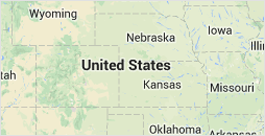Emily Clarke
PHONE NUMBER : -----
Map

How is Table-Level Lineage Functionality Beneficial?
Measuring and managing the flow of data are vital tasks for understanding how data changes from one source to another. Databases use lineage processes to track data, but in some cases, IT professionals need a more granular look at the details. For these operations, it may be necessary to turn to table-level lineage across a data catalog.
What is Table-Level Lineage?
Data at the table level provides insight into how tables relate to one another. The goal with table-level lineage is to graphically map out relational metadata. This metadata shows information like table partition and ownership.
Although table-level lineage operations do not highlight the mapping of individual columns of data, they can still be very useful for data scientists who need a relational understanding of how data interacts with itself and other data sources.
Why Table-Level Lineage Matters
Table-level linage makes data catalog management more efficient. When data scientists have greater control over the detail of data, particularly in relational databases, they can more effectively leverage the power of data. This is beneficial for identifying errors, but it also plays a big role in conducting impact analyses.
Data governance is also a key part of utilizing table-level lineage. Having greater insight into the integrity of data can support the use of data in more projects. This is also crucial when data is used in projects that are subject to regulatory compliance. If the accuracy and integrity of data can't be verified through lineage operations, the results of any project using this data could be called into question.
Data scientists must also practice lifecycle management for data. Table-level linage helps to ensure that only the newest, most relevant data is part of a catalog. When table-level lineage is examined, older or irrelevant data can be phased out where it may have been missed using analysis at a higher level. This ultimately ensures that the best data is incorporated into a project instead of waiting until a project is completed to discover that data integrity was an issue all along.
Author Resource:-
Emily Clarke writes about the best data catalog tools and data analysis softwares. You can find her thoughts at data catalog blog.
